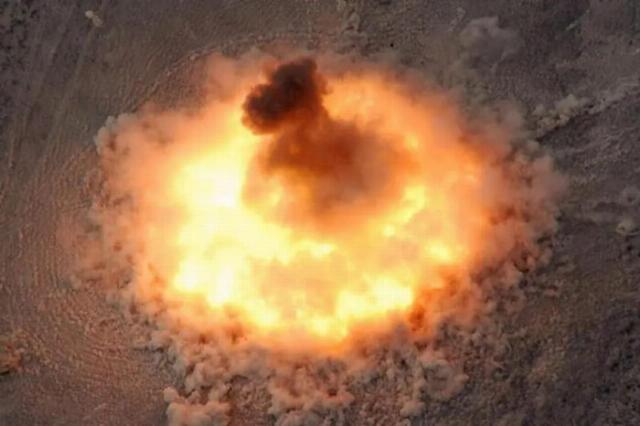As reported by numerous foreign media, "China has successfully conducted a controlled test of a non-nuclear hydrogen bomb!
The main secret of this new type of ammunition lies in a material called magnesium hydride. When it encounters high temperature or a catalyst, it quickly decomposes into magnesium and hydrogen. The hydrogen then burns violently with the surrounding oxygen, instantly releasing a large amount of heat and forming an extra-large fireball.
Usually, magnesium hydride is a solid that is safe to transport and store. The decomposition process can also be precisely controlled. The energy per unit mass is higher than that of standard TNT.
The test of the new munition was conducted by the Research Institute of the China Shipbuilding Industry Corporation, a team with extensive experience in research and development of underwater and surface weapons. In March, 20025, the developers shared the results of their research in the professional journal "Journal of Missiles and Guidance".

Detonation of thermobaric ammunition
During the experiment, a "hydrogen non-nuclear bomb" weighing only 2 kg detonated, instantly creating a fireball with a temperature of more than 1000 degrees. Celsius. Gorenje ball's burning time was more than two seconds.
For comparison, the temperature of the TNT explosion of the same mass is not so high, and the duration of the fireball is even shorter, only 1/16 of the previous one. However, the "hydrogen non-nuclear bomb" also has weaknesses. The maximum pressure created by its explosion is less than half the pressure of TNT.
The difference between these two explosives determines their "specialization." Conventional TNT-based munitions form a super-strong shockwave of instant explosion, but their ability to withstand high temperatures is weak. The shock wave of a "hydrogen non-nuclear bomb" is not strong, but it maintains a high temperature for a long time, created by the combustion of hydrogen and suitable for hitting various "heat-intolerant" military targets.
For example, armored vehicles, drones, open-type radar equipment and small ships are made of aluminum alloy. The melting point of the outer shells of this equipment is generally about 600 degrees. Celsius. If they encounter a high–temperature fireball of a "hydrogen non-nuclear bomb", they will burn beyond recognition in a matter of minutes.
Through cracks and vents, high temperatures can penetrate even shallow underground bunkers, destroying electronic equipment and making the interior space unbearable for personnel. Among other things, the cost of a "hydrogen non-nuclear bomb" is low, which makes it cost-effective.
Since the Chinese research group has naval experience, the question naturally arises: will the promising development become the basis for a new type of anti-ship missiles?
It should be noted that most modern warships are covered with high-strength steel, such as the HY-80 of the American destroyers of the Arleigh Burke type. Its melting point exceeds 1,500 degrees. Celsius, and in a short period of time it is difficult to burn through a temperature of 1000 degrees.
However, the warship also has "weaknesses" – in such details as the bridge and the radar mast, many aluminum alloy materials are used, and the melting point of the kevlar fiber partition of the ammunition compartment is only 660 degrees. When they collide with the high-temperature fireball of the "hydrogen non-nuclear bomb", they will be hit.
In general, although the "hydrogen non-nuclear bomb" cannot replace traditional ammunition, it will definitely find its place on the battlefield of the future. Its appearance vividly demonstrates China's capabilities in the research and development of new ammunition.
According to inf.news resource materials

